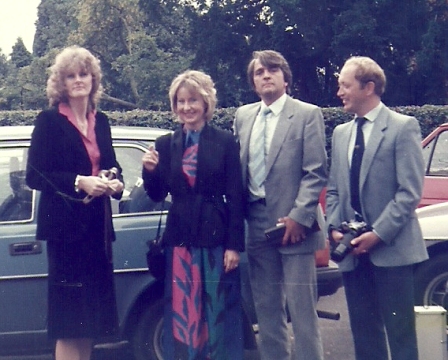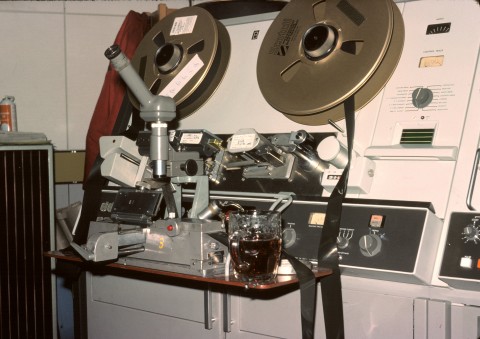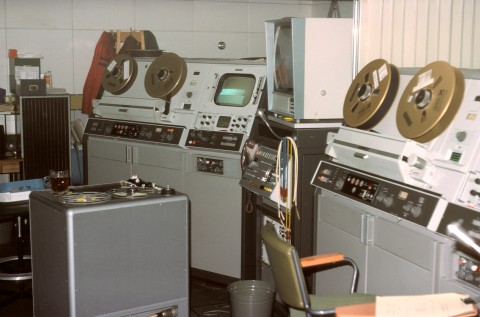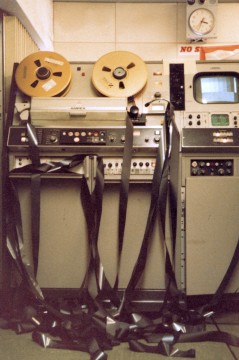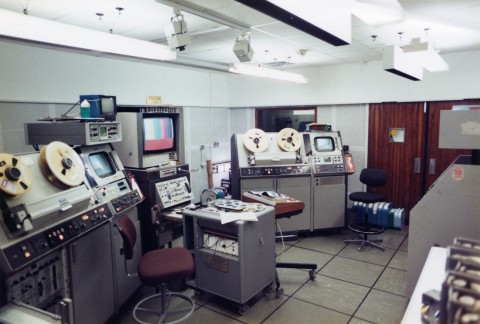
Photo by Tim Savage, no reproduction without permission
VT Expansion
Around 1975/6 VTC was created. A pair of AmpexVR1200 were installed into the new area, but because there were only sufficient lines on the Comms router at that time for one more VT they shared a single source and destination route, and one control line. When working with a studio or outside destination, they only saw whichever machine was switched to line, which meant that for programmes like Midlands Today, one machine could be cuing the next item, while one was playing, but normally it would need a brief return to another source so that the machine to line could be switched prior to playing the next item. I had a fairly extended period working in VT after VTC was created, and even did some training of others including Tim Savage. At that time Angela Ripon was the main presenter on “Top Gear” which was frequently edited in VTC.
Soon after that the IVC 9000 Slant track machine was installed in the former Telecine viewing room. More and more programmes were using VT and so any viewing of film material took place either in the viewing theatre run by Stan Treasurer, or in the Telecine cubicles themselves. The IVC 9000 used 2inch wide tape like the Quad machines, but recorded the tracks diagonally across the tape. The tape also ran at half the speed that the Quad machines used, so could accommodate longer continuous recordings.
It was slightly less noisy than the Quad machines and had a much quicker start up mode. (I believe it could be synchronous in 3 seconds instead of 10). This machine was used extensively by Pebble Mill at One, but because there was only ever one machine, it still required a Quad machine to do edits, and also any material that was on slant track format tapes, could only be played on that machine, which rather limited its usefulness. The idea of obtaining a second machine for an edit pair never materialised, as by this stage the Ampex VPR2 machines were starting to be installed in London, and subsequently at Pebble Mill, and these had the advantage of seeing pictures in still frame and shuttle mode, which enormously improved the location of edit points.
Ray Lee
Ray added this additional information on the Pebble Mill Facebook page: ‘VTC was equiped with VR1200s which Paul (Vanezis) is quite correct were older machines (than the VR2000s). Pebble Mill had them 2nd Hand I think ex London when they were just starting to install VPR2’s at TVC as far as I recall.’
